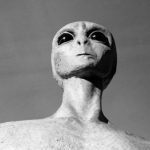 Creepy
Creepy  Creepy
Creepy  Technology
Technology 10 Scientific Breakthroughs of 2025 That’ll Change Everything
 Our World
Our World 10 Ways Icelandic Culture Makes Other Countries Look Boring
 Misconceptions
Misconceptions 10 Common Misconceptions About the Victorian Era
 Mysteries
Mysteries 10 Strange Unexplained Mysteries of 2025
 Miscellaneous
Miscellaneous 10 of History’s Most Bell-Ringing Finishing Moves
 History
History 10 Great Escapes That Ended Right Back in Captivity
 Weird Stuff
Weird Stuff 10 Fascinating Things You Might Not Know About Spiders
 Food
Food 10 Everyday Foods You Didn’t Know Were Invented by the U.S. Military
 History
History 10 Odd Things Colonial Americans Kept at Home
 Creepy
Creepy 10 More Representations of Death from Myth, Legend, and Folktale
 Technology
Technology 10 Scientific Breakthroughs of 2025 That’ll Change Everything
 Our World
Our World 10 Ways Icelandic Culture Makes Other Countries Look Boring
Who's Behind Listverse?

Jamie Frater
Head Editor
Jamie founded Listverse due to an insatiable desire to share fascinating, obscure, and bizarre facts. He has been a guest speaker on numerous national radio and television stations and is a five time published author.
More About Us Misconceptions
Misconceptions 10 Common Misconceptions About the Victorian Era
 Mysteries
Mysteries 10 Strange Unexplained Mysteries of 2025
 Miscellaneous
Miscellaneous 10 of History’s Most Bell-Ringing Finishing Moves
 History
History 10 Great Escapes That Ended Right Back in Captivity
 Weird Stuff
Weird Stuff 10 Fascinating Things You Might Not Know About Spiders
 Food
Food 10 Everyday Foods You Didn’t Know Were Invented by the U.S. Military
 History
History 10 Odd Things Colonial Americans Kept at Home
10 Weird Space Images That Look Like Unlikely Things
Pareidolia refers to our tendency to perceive patterns where they may not exist, like seeing your favorite celebrity’s face on a piece of burned toast. Beyond that, pareidolia is an evolutionary advantage that helped keep us alive: noticing a hidden leopard’s face in a tuft of reeds probably saved at least one of our prehistoric ancestors. Therefore, we’re eternally wired to see things that may not be there because occasionally they are.
The following entries offer perfect examples, not just for their stunning looks but for the crazy cosmic chaos that caused them. Plus, by combining an ancient adaptation with space images, we’re bridging the deep past and the far future.
Related: 10 Discoveries We Wouldn’t Have Without Space Travel
10 A Double Lightsaber (Made by a Violent Baby Star)
Stars are hot, and they’re made from hot gas (plasma), so it would make sense that baby stars would grow out of hot, or at least warm, gas. However, hot gas is too energetic to stick together. So, for a baby star to form, you need a whole bunch of cold gas.
Once a baby star does form, its early years are almost as chaotic as its potential supernova death. Because as young stars gorge themselves on gas, they throw some of it up, shooting two beams of material out into space. All sorts of chaos occur when these scorching, super-fast jets collide with nearby gas and dust, creating shockwaves and heating the shocked material to thousands of degrees while clearing vast spaces, or cavities, within the surrounding cloak of dust and gas. A violent young star like this is called a Herbig-Haro (HH) object.
Featured here, HH 24 resembles a celestial double lightsaber. It’s just 1,350 light-years away in a molecular cloud, the birthing place of stars. Thanks to Hubble’s infrared view, we can see through the gas, dust, and gassy dust that would otherwise hide this amazing object and its birthing ground.[1]
9 A Cosmic Moth (and Extremely Rare Phenomenon)
Is that a galactic moth attracted to a bright celestial flame? It’s actually a unique pair of galaxies, collectively called NGC 3314—the specific galaxies are designated with an “a” or “b” at the end of the name, just like all those twins on social media.
NGC 3314 is a wonderfully unique system because it appears to be merging, like so many galaxies in the universe—even our Milky Way is a mishmash of mergers and will merge again in the future.
But NGC 3314 is not that. In fact, the two galaxies aren’t even close to one another; they just happened to overlap from our (Hubble’s) viewpoint. More specifically, NGC 3314a is roughly 117 million light-years away, while NGC 3314b is about 140 million light-years away.
This is an “extraordinary chance alignment” that silhouettes the foreground spiral galaxy, which we see face-on, to show us all its dusty clouds in rare brilliance.[2]
8 A Manatee (Formed by the Near-Light-Speed Jets of a Quasar)
Space is a conundrum because a lot of it is invisible if you look in the wrong way. Accordingly, if you look at different types of light (such as infrared and ultraviolet), you discover a whole other universe, it seems.
For example, the marvelous manatee nebula, W50, is the ghost of a dead star. And it’s only thusly visible in radio waves, as images here. As some of you may have guessed, it’s not an actual space manatee but an enormous cloud left over from the death of a star around 20,000 years ago, according to the National Radio Astronomy Observatory (NRAO).
There’s also some mind-blowing hidden action within, as the black hole (from the dead star) sucks on the gas from its still-living stellar companion—lots of stars come in pairs. Unlike Bonnie and Clyde, they don’t die together.
So the manatee’s black hole became a quasar, or active black hole, devouring its partner and blasting beams of particles into space at nearly the speed of light. In comparison, this makes Earth’s manatees seem much less interesting.[3]
7 “Cotton Candy Clouds” (Show Space’s Hidden Colors)
Like a famous person surrounded by a troupe of sycophants and weirdos, our Milky Way is also surrounded by a clique of smaller hangers-on. The most major of these satellite galaxies is the Large Magellanic Cloud, floating just 160,000 light-years away in the constellations Dorado and Mensa.
Not only is it within cosmic arm’s reach, but it’s also full of beautiful cloudscapes, including some “cotton candy clouds” pictured by trusty, hardworking Hubble. Would we see such beautiful hues with the naked eye, perhaps after accidentally being booted out into space? Sadly, not so much. To capture this polychromatic view, Hubble used five different filters, including those that capture invisible light (to the human eye), such as ultraviolet and infrared.
Then, to create the resultantly striking picture, image-processing specialists assigned different colors to different wavelengths. For example, the blues and purples were assigned to shorter wavelengths, such as ultraviolet. The reds were assigned to longer wavelengths like infrared—this color scheme also best represents reality, as one may notice from the names of the wavelengths.[4]
6 A Blot of Ink (Is Actually Full of Light and Young Stars)
The ominous dark cloud here, looking like ink splashed across a spectacular starscape, was appropriately imaged by the Dark Energy Camera. Developed by the Department of Energy, this 570-megapixel monster is among the world’s most powerful digital cameras.
The image shows Circinus West, the birthing place of stars. As mentioned earlier, possibly in a counterintuitive fashion, stars must be born from cold gas—hot gas is too rowdy to settle and clump into blobs big enough to go nuclear. The gas is also intensely dense, which is why the cloud looks so dark that it blots out light.
And oh boy, is this cloud ever full of dense, cold gas: it’s larger than our galaxy, 180 light-years across, and holds as much stuff as 250,000 Suns. The stars born of this gas can be seen shining through the darkness as they explode into life and create pockets within the thick, dark, birthing shroud.[5]
5 A Bunch of Grapes (63,000 Suns’ Worth of Grapes, to Be Exact)
Sometimes, the universe creates lots of stars close together, like a bunch of grapes, holding themselves in a sphere thanks to their immense collective gravity. The globular cluster NGC 1850 is one of those stellar bunches of grapes, just 160,000 light-years away in the Large Magellanic Cloud, a little sibling galaxy of our beefier Milky Way.
The globular cluster is 100 million years in age and pretty hefty, to say the least, carrying a mass of about 63,000 Suns. It’s also remarkable because we don’t have any globular clusters full of young stars in our own galaxy.
Here’s how it formed: when the cluster’s first stars were born, they exploded into life and blew away the dust and gas that made them. But since the stars were so numerous and heavy, their gravity didn’t let that expelled gas and dust get too far away.
Their humongous gravity then pulled a bunch of gas back in, creating a second generation of star birth! The blue stuff (nebulosity) is the gassy entrails of huge, hot stars that blew themselves apart within tiny timespans—possibly just millions of years for the hottest, bluest stars in the universe.
The cluster also contains elderly red stars that may be many billions of years old and on their last legs, puffing up and glowing redder as they die by losing their outer layers into space. To boot, there’s also a black hole hiding out in the cluster because that’s how big stars die.[6]
4 A Smiley Face (Made by Holes in the Sun)
NASA’s Solar Dynamics Observatory (SDO) keeps tabs on the Sun for us. It’s in geosynchronous orbit, spinning alongside our planet to continuously view our star. The wacky view featured here, of a Sun that seems to smile as it irradiates us, is captured in ultraviolet—this UV is normally absorbed by the atmosphere, so it’s beneficial that SDO is up in space.
The dark parts of the smiley face are coronal holes or places where the Sun’s plasma is less dense and cooler, so they appear darker. These holes are also where the Sun’s magnetic field is open and unipolar, meaning that the magnetic field at these points does not loop back to reconnect to the Sun. Instead, it leads out into space, fast-tracking the solar wind (a stream of charged particles) to blow into space and toward us at speeds of up to nearly 500 miles per second (804 km per second)![7]
3 The Ghost (of a Dying Star)
Nebulas may reflect the light of stars, or they may emit their own light. Or, if they’re getting enough energy from a nearby star, they may do both.
The nebula named IC 63 is also much more excitingly known as the “ghost of Cassiopeia” because its eerily beautiful form is catching the light of the gigantic, blue-hot star Gamma Cassiopeiae. It’s located around 550 light-years away from us, and its ghostly flowing veils of dust and gas are shaped by the UV radiation of the giant star just mentioned. This also causes the ghost nebula to emit its own light.
The ghost is but one part of a larger feature that’s about as wide as four full Moons—together, this nebulous region is all being star-broiled by Gamma Cassiopeiae’s huge radioactive output, which unleashes as much energy as 34,000 Suns.[8]
2 The Sun in Reptile Skin (Reveals Solar Secrets)
New solar observing tools are revealing the Sun in unprecedented fashion. The Daniel K. Inouye Solar Telescope’s “first light” shows us the highest-resolution solar image yet captured, and the scope hasn’t even reached its full potential yet.
Still, it allowed us to view solar features at the smallest scales, just 18 miles in size. The image shows the scorching turbulence that covers the Sun. Accordingly, the cell-like structures pictured are the manifestation of heat traveling from the Sun’s inner depths to its surface, encompassing an area of 22,600 by 22,600 miles (36,371 by 36,361 km).
The brighter center of the cells is where hot Sun-stuff rises up, and the dark lines are where it cools and sinks back down into the solar interior via convection. The bright features within the dark lines show the markers of magnetic fields, channeling energy up into the solar atmosphere.[9]
1 A Guitar (Created by Merging Galaxies)
A brand new NASA image shows Arp 105 in stunning detail. This “dazzling” merger showcases the monumental collision between two galaxies: a spiral one, similar to our Milky Way, and an elliptical galaxy, which is more diffuse and lacks spiral arms.
When galaxies clash, their gravity draws them into incredible shapes. In this case, gravitational interactions have stretched out a tidal stream, a tail of stars and gas that’s 362,000 light-years long—more than twice the size of our entire Milky Way.
Far from being destructive events (though stars or planets may get flung), mergers can kickstart the formation of many new stars. This process is intensely visible in some of the bright blue patches in the image, including those at the edges of the spiral galaxy at the lower right.
Arp 105 itself is part of the galaxy cluster Abell 1185, which is located about 400 million light-years away and contains 82 galaxies, most of which are interacting as if jamming out in some kind of celestial nightclub.[10]








